- Home
- Conn Iggulden
The Dangerous Book of Heroes Page 30
The Dangerous Book of Heroes Read online
Page 30
At about 1:15 P.M., on the quarterdeck of the Victory, Nelson was shot. A marksman above in the mizzenmast of the Redoutable—her only surviving mast—fired and the musket ball passed through the gold epaulette on Nelson’s left shoulder. It broke two ribs, severed a main branch of the pulmonary artery to the heart, and continued on to break two vertebrae. He sank to his knees and then slid to the deck as Hardy went to his assistance. “They have done for me, at last,” Nelson said to him. He was carried below to the cockpit—on the way ordering damaged tiller ropes to be repaired—but there was nothing surgeon Beatty could do for him.
Nelson asked for Hardy to come to him, but the fighting was fierce. At 1:45 P.M. Villeneuve surrendered the flagship Bucentaure to HMS Conqueror. The Bucentaure had been dismasted, and her decks and gangways were filled with wreckage and the dead. At 2:15 P.M., the Santa Ana struck her colors to the Royal Sovereign. It wasn’t until the Fougueux and the Redoutable surrendered to the Victory and the Temeraire that Hardy could leave the quarterdeck at 2:20 P.M.
“Well, Hardy, how goes the battle?” Nelson asked weakly. “How goes the day with us?” Hardy reported that twelve or fourteen enemy ships were already captured, but another five were bearing down upon the Victory. “I hope none of our ships have struck, Hardy?”
“No, my lord,” Hardy replied, “there is no fear of that.” Hardy shook his friend’s hand and returned to the deck.
Some fifty minutes later Hardy returned to the surgeon’s cockpit, took and held Nelson’s cold hand, and this time was able to congratulate him on a brilliant victory. The Royal Navy had carried the day, again without the loss of a single ship. The news of Nelson’s mortal wound was passed only to Collingwood in the Royal Sovereign.
“Don’t throw me overboard, Hardy,” Nelson whispered, and then: “Take care of my dear Lady Hamilton…. Kiss me, Hardy.” The tall, angular Hardy knelt down and kissed his cheek. Nelson murmured: “Now I am satisfied; thank God, I have done my duty.” Hardy stood gazing at his friend for a moment and then knelt again and kissed his admiral’s forehead. “Who is that?” asked Nelson. It appears his sight had gone.
“It is Hardy,” the captain replied.
“God bless you, Hardy.” Then Hardy returned to the quarterdeck.
Nelson lingered a little longer, saying again: “Thank God, I have done my duty.” The Victory’s logbook records in pencil: “Partial firing continued until 4.30 P.M., when a victory having been reported to the Right Hon. Lord Viscount Nelson, KB, and Commander-in-Chief, he died of his wound.”
At 5 P.M. there was a massive explosion. The French Achille, dismasted and on fire, had blown up. The tally that day was twenty-eight French and Spanish ships of the line surrendered and one destroyed. Eleven of those surrenders, including the Santa Ana, escaped during the gale to reach Cadiz. One was wrecked on the beach, while the remainder were found to be so severely damaged that they never put to sea again. In addition, three more French ships of the line were wrecked in an attempt to retake captured French ships the following day, while the final four ships that escaped to the south were captured fourteen days later.
Ultimately, twenty-six enemy ships were captured or destroyed in the battle of Trafalgar, 5,860 French and Spanish killed or wounded, and 20,000 taken prisoner. No British ship was lost, but 1,600 seamen were killed or wounded. The battle of Trafalgar was Nelson’s third total victory.
That night, when the gale lashed the fleets and the British seamen risked their lives to rescue French and Spanish crews from their battered ships, it was observed with dismay that the three admiral’s lanterns at the stern of HMS Victory were not lit.
Copyright © 2009 by Graeme Neil Reid
Nelson’s body was preserved in a cask of brandy and returned to Britain. Battle-hardened, tarred, and pigtailed sailors wept when they learned of his death. One wrote home: “All the men in our ship are such soft toads, they have done nothing but Blast their Eyes and cry ever since he was killed. God bless you! Chaps that fought like the Devil sit down and cry like a wench.” Britain mourned.
On January 9, 1806, in the first state funeral for a commoner, Horatio Nelson—in a coffin made of timber from L’Orient—was placed in a tomb of black marble in the crypt of Saint Paul’s Cathedral, exactly below the center of the dome. He was posthumously created earl. Memorials to Captains Duff of the Mars and Cooke of the Bellerophon, who also died at Trafalgar, are nearby. So also is the modest tomb of Admiral Collingwood. Succeeding Nelson in the Mediterranean, controlling all the seas and coasts from Gibraltar to Turkey, Collingwood literally worked himself to death only five years later in the cause of freedom.
Nelson and his “band of brothers” gave Britain command of the seas for some 140 years. The famous uniform worn by sailors of the Royal Navy, most commonwealth navies, and copied by almost every other navy in the world remembers Admiral Nelson. The three white stripes around the border of the shoulder flap record the three great victories of the Nile, Copenhagen, and Trafalgar. The black silk neck scarf echoes the mourning bands worn by the seamen who pulled the gun carriage carrying his coffin, from Whitehall steps to the Admiralty and Saint Paul’s.
Horatio Nelson’s most enduring qualities were his humanity and care of others—the enemy as well as his own men—and a leadership inspired by love rather than dominance. Lord Montgomery of Alamein judged him on all counts to be “supreme among captains of war.” In the French language, a sudden decisive blow is called a “coup de Trafalgar.” At Trafalgar Day dinners, the toast is a unique silent toast—to “the Immortal Memory.”
HMS Victory is now preserved in Portsmouth as she fought at Trafalgar and is the honored permanent flagship of the commander in chief of the Naval Home Command. She is the oldest commissioned vessel in the world. Because of battle, decay, and rot from over 250 years, little of the original oak remains today. Yet, in All Saints’ Parish Church, Burnham Thorpe, Norfolk, you can touch still the timber that was afloat off Cape Trafalgar on October 21, 1805.
Recommended
The Authentic Narrative of the Death of Lord Nelson by William Beatty
The Life of Nelson by Robert Southey
Nelson and His Captains by Ludovic Kennedy
Nelson the Commander by Geoffrey Bennett
Trafalgar Square, London
HMS Victory, HM Naval Dockyard, Portsmouth, Hampshire, U.K.
The Royal Naval Museum, Portsmouth, Hampshire, U.K.
The National Maritime Museum, Greenwich, London Chatham Naval Dockyard, Chatham, Kent, U.K.
Saint Paul’s Cathedral, London
Guildhall Monument, Guildhall, London
Trafalgar Cemetery, Gibraltar, U.K.
The Marines at Iwo Jima
The order to land was given at 0630 hours.
At 0902 the first landing craft reached the shore. At 0915 the first enemy mortar rounds crashed into the marines and corpsmen struggling up the steep, soft volcanic-ash beach. In two hours the shoreline was a mass of floundering equipment—jeeps, field guns, tanks, bulldozers, amtracks, and men, hefting their individual eighty-pound loads. The Japanese pounded them with artillery, mortar, and machine guns. It was February 19, 1945. Operation Detachment, the battle for Iwo Jima, had begun.
By February 1945 in World War II, the Allied navies, armies, and air forces were in ascendency over the fascist Axis powers.
MAP OF IWO JIMA
February 19, 1945
Copyright © 2009 by Matt Haley
In western Europe, American, British, and Canadian armies gathered themselves for the final assault into Nazi Germany and Austria, and in southern Europe they were poised for complete victory. In eastern Europe the Soviet army paused outside Dresden before its advance on Berlin. Battles had to be fought and won, but the end of six years of war was at last in sight. In the Far East, though, in the war against Japan, the situation was not so clear-cut.
In Southeast Asia, the British Fourteenth Army under General Slim was fighting steadily southward through the B
urmese jungle to liberate Rangoon. In the southwest Pacific, American, Australian, and New Zealand armies under General MacArthur were advancing northward from New Guinea to liberate New Britain and the Philippines, while in the north Pacific, American and Canadian troops were advancing through the Aleutian Islands.
In the tropical central Pacific, however, the going was very tough. After the 1942 stand at Guadalcanal in the Solomon Islands, the U.S. Navy, Marines, and Air Force under Admiral Nimitz had island-hopped westward and northward across the Pacific Ocean. Island by island, atoll by atoll, the Pacific was liberated from Japanese occupation. Now, for the first time, American forces were to invade Japanese territory—the island of Iwo Jima, only 660 miles south of Tokyo. Japanese soldiers had fought fiercely before, but their resistance at Iwo Jima was to be profound. Here was some of the bitterest fighting of the entire war.
Iwo Jima lay halfway between the liberated Mariana Islands to the south and the Japanese mainland to the north. It was strategically important for several reasons. It was the next stage in the island hop to the Japanese mainland and, with Okinawa Island, formed part of the Japanese inner-defense system. This had to be punctured to reach Japan. In addition, Japan had built three airfields on the island, which were needed by the air force for its long-range P-51 Mustang fighters. From these airfields, the British-designed Mustangs would be able to protect the Boeing Superfortress bombers attacking Japan from Guam, Saipan, and Tinian. The Japanese knew the importance of holding Iwo Jima.
“Iwo Jima” means “sulphur island.” The island supplied Japanese industry with sulfur, and from its mines and caves, from fissures in the bare volcanic rock itself, sulfur gas constantly seeped into the air. Shaped like an ice-cream cone and measuring four and a half by two and a half miles, this gray, brown, and black Pacific island is no tropical paradise. At the narrow base of the cone, the southern tip, rises the extinct conical volcano Mount Suribachi. At the broad top of the cone, the northern end, cliffs rise from the sea to a domed plateau. In 1945 there was an almost total lack of vegetation and no water. The Japanese relied upon rainwater collected in cisterns.
Defending Iwo Jima was Lieutenant General Tadamichi Kuribayashi, in command of almost 22,000 soldiers of the Imperial Army. Surviving documents show that Kuribayashi knew that his forces would, eventually, lose to the invading Americans. He’d been told by Japanese High Command to make the island impregnable, for once the Americans attacked, there would be no resupply or reinforcement from Japan. He had a few light tanks—under the command of Lieutenant Colonel Baron Nishi, a gold medal winner at the 1932 Los Angeles Olympic Games—but all his aircraft had been withdrawn for the defense of the mainland. All civilians had been evacuated.
His battle plan, therefore, was for every man to fight to the death. He wanted to cause so many American casualties—ten enemy dead for every Japanese—that an Allied invasion of Japan would be too costly to consider. A negotiated surrender would thus be possible, and the sacred Japanese mainland would remain inviolate.
Kuribayashi pre-ranged and targeted the whole island from numerous concealed artillery, mortar, and rocket positions. The surface was strewn with land mines. The caves and sulfur mines were converted and strengthened into a defensive network of eight hundred concealed pillboxes, artillery emplacements, antiaircraft batteries, mortar posts, and fortified heavy machine-gun nests and rocket bunkers. They were connected by covered trenches and miles and miles of tunnels, some with underground living quarters. One complex was seventy-five feet deep, held two thousand troops, and had a dozen exits. As one marine commented, “The Japanese weren’t on Iwo Jima, they were in Iwo Jima.”
Admiral Spruance of the Fifth Fleet commanded the American invasion force. He’d assembled 450 vessels, 482 landing craft, and 82,000 men in a fleet that took some thirty days sailing to reach Iwo Jima. The expeditionary troops were under overall command of Lieutenant General Smith, USMC, while Major General Harry Schmidt led the invading marines, navy corpsmen, Seabees, and Pioneers. These were a combination of experienced and newly trained servicemen.
Bombing of Iwo Jima had begun in August 1944, but from December to February it was attacked by aircraft and U.S. Navy guns for seventy-two consecutive days. In the final three days, from February 16 to 19, six battleships and five heavy cruisers bombarded Japanese positions with ten thousand shells. Although it was the heaviest naval bombardment of the war, it wasn’t enough. The marines had wanted a longer bombardment, yet that wouldn’t have been enough either.
The British army discovered at the 1916 battle of the Somme that the heaviest artillery bombardment is not effective against prepared and reinforced underground positions. It’s not a pleasant time for the defenders, but they simply snug down until the bombardment stops. At Iwo Jima, American intelligence had also underestimated the strength of the Japanese garrison by about 70 percent. To conquer the island’s eight square miles it was expected to take four days, a maximum of a week. But in this individual fight to the death all those calculations had to be discarded.
In their twill uniforms, the Marine Fourth and Fifth Divisions landed on the black, volcanic southeastern beaches of Iwo Jima on February 19, 1945, while the Third Division was held in reserve offshore. Operation Detachment had begun. They found that a beach of volcanic ash and dust doesn’t compact under weight and pressure like a sand beach. Movement became two steps forward, one step back as the first wave of men struggled through the ash slurry to reach the initial ridge. From higher ground, Japanese machine-gun fire cut them down in swathes, the survivors pinned behind the ridge.
Below, the beach became clogged with succeeding men and equipment, while enemy artillery, mortars, and antitank guns “walked” their shells along the numerous targets. If the marines couldn’t break out soon, disaster threatened.
With considerable courage and heavy casualties, the “leather-necks” forced themselves over that initial bullet-swept ridge and fought their way through the first Japanese defenses. By the close of the day, thirty thousand men had been successfully landed, a small beachhead had been established, and some marines had actually reached the opposite western shore.
They’d suffered a total of 2,240 casualties, including 501 killed. Two Medals of Honor had already been earned. The ferocious fighting continued throughout the night, but the Japanese refused to be drawn into the open. It was a warning of the battle to come.
By the close of the second day, for a further thousand casualties, the Fifth Division had advanced south and west to isolate Mount Suribachi, while the Fourth had advanced north and west to capture the southernmost airfield. Both advances remained under twenty-four-hour Japanese artillery, mortar, and machine-gun fire.
Offshore, the navy was radioed the coordinates of Japanese positions and pounded them with its heavy guns, while carrier aircraft attacked them with torpedoes, napalm, and rockets. The fleet came under attack just once, on the twenty-first, from suicide kamikaze “divine wind” aircraft from Okinawa. The aircraft carrier Bismarck Sea was sunk and the carrier Saratoga severely damaged and forced to retire to Pearl Harbor, while Lunga Point was damaged but remained operational.
At 550 feet high and with protected gun emplacements, Mount Suribachi in the south was like a medieval fortress. Despite heavy naval and aircraft bombing, its guns continued to wreak havoc on the landing beach and the marine advance. Somehow, Suribachi had to be taken.
On the third day, the Twenty-eighth Regiment of the Fifth Division assaulted the slopes of the heavily defended volcano. After two days of uphill fighting, marines of the Second Battalion at last reached the summit in drizzling rain. Although the mountain wasn’t cleared of the enemy, they raised a small Stars and Stripes on a length of broken water pipe. It was 1020 on the morning of February 23.
The flag was seen by the men on the landing beaches. It was seen by the Fourth Division, then fighting for the second airfield. It was seen by the men at sea. They cheered while the ships blew their sirens and horns. Although it w
as the day when they were expected to have already captured most of Iwo Jima, it was a seminal moment for them all. “We knew then we’d eventually take the island,” said James Johnson of the Fourth Division.
Two hours later, while still fighting Japanese snipers for total control of Suribachi, a larger eight-foot flag from a landing craft replaced the first flag. It was this second flag raising that photographer Joe Rosenthal captured in his renowned photograph, instinctively snapping his shutter as he turned around from a discussion.
As the photograph was syndicated overnight across America, the six men who raised that second flag became household names. They were marine privates Harlon Block, Rene Gagnon, Ira Hayes, Franklin Sousley, and Michael Strank and navy corpsman medic John Bradley. The battle on Suribachi continued as Japanese soldiers fought on until killed or sealed in their caves.
Copyright © 2009 by Matt Haley
“In one cave we counted one hundred and forty-two Japs,” said Bradley. “And the flamethrowers did a fine job on top of the mountain. We tried to talk them out. They wouldn’t come out, so then we used the flamethrowers as a last resort.” This tactic became common throughout the long battle to come.

 The Khan Series 5-Book Bundle
The Khan Series 5-Book Bundle Tollins 2: Dynamite Tales
Tollins 2: Dynamite Tales Tollins: Explosive Tales for Children
Tollins: Explosive Tales for Children The Field of Swords
The Field of Swords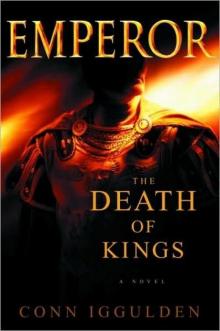 The Death of Kings
The Death of Kings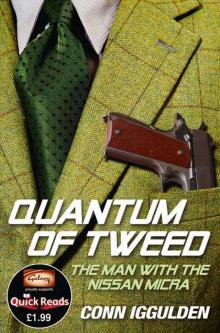 Quantum of Tweed: The Man With the Nissan Micra
Quantum of Tweed: The Man With the Nissan Micra Bones of the Hills
Bones of the Hills Genghis: Birth of an Empire
Genghis: Birth of an Empire The Gates of Rome
The Gates of Rome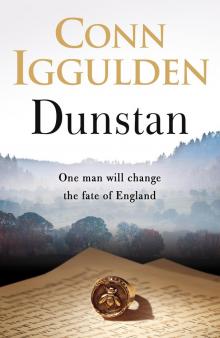 Dunstan
Dunstan Fig Tree
Fig Tree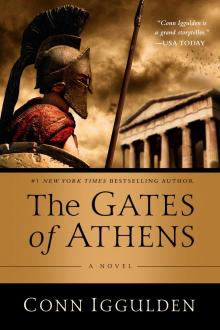 The Gates of Athens
The Gates of Athens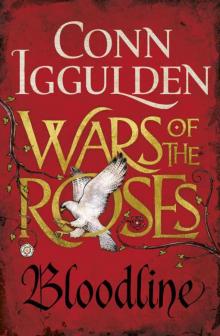 Stormbird
Stormbird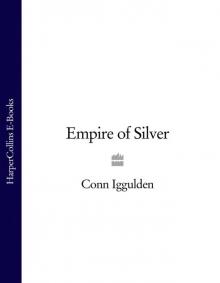 Khan: Empire of Silver
Khan: Empire of Silver The Abbot's Tale
The Abbot's Tale Gengis: Lords of the Bow
Gengis: Lords of the Bow The Gods of War
The Gods of War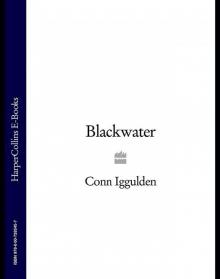 Blackwater
Blackwater Ravenspur: Rise of the Tudors
Ravenspur: Rise of the Tudors Wars of the Roses: Trinity (War of the Roses Book 2)
Wars of the Roses: Trinity (War of the Roses Book 2)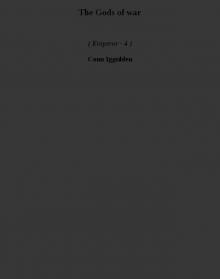 The Gods of war e-4
The Gods of war e-4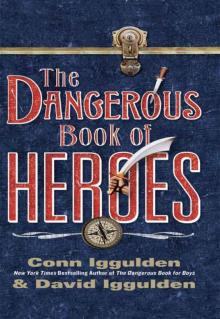 The Dangerous Book of Heroes
The Dangerous Book of Heroes Stormbird wotr-1
Stormbird wotr-1 Emperor: The Death of Kings
Emperor: The Death of Kings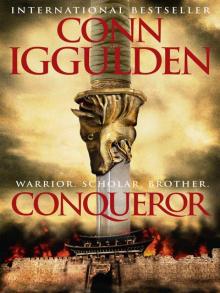 Conqueror (2011) c-5
Conqueror (2011) c-5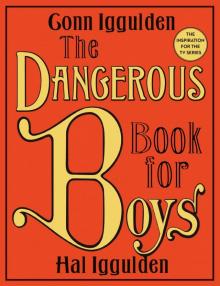 The Dangerous Book for Boys
The Dangerous Book for Boys Genghis Lords of the Bow
Genghis Lords of the Bow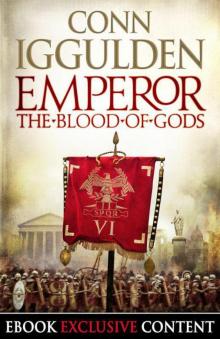 Emperor: The Blood of Gods (Special Edition) (Emperor Series, Book 5)
Emperor: The Blood of Gods (Special Edition) (Emperor Series, Book 5) The Emperor Series: Books 1-5
The Emperor Series: Books 1-5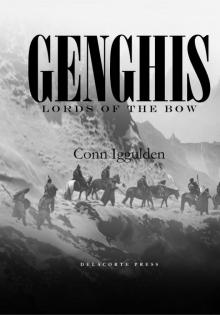 Lords of the Bow c-2
Lords of the Bow c-2 Lords of the Bow
Lords of the Bow Quantum of Tweed
Quantum of Tweed Wars of the Roses 01 - Stormbird
Wars of the Roses 01 - Stormbird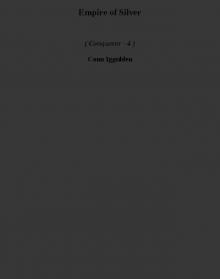 Empire of Silver c-4
Empire of Silver c-4 Birth of an Empire
Birth of an Empire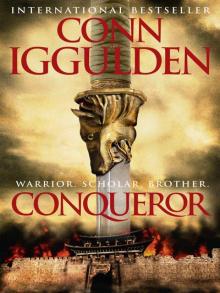 Conqueror (2011)
Conqueror (2011)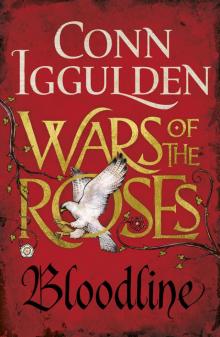 Wars of the Roses: Bloodline: Book 3 (The Wars of the Roses)
Wars of the Roses: Bloodline: Book 3 (The Wars of the Roses) Bones Of the Hills c-3
Bones Of the Hills c-3 Empire of Silver
Empire of Silver The Khan Series 5-Book Bundle: Genghis: Birth of an Empire, Genghis: Bones of the Hills, Genghis: Lords of the Bow, Khan: Empire of Silver, Conqueror
The Khan Series 5-Book Bundle: Genghis: Birth of an Empire, Genghis: Bones of the Hills, Genghis: Lords of the Bow, Khan: Empire of Silver, Conqueror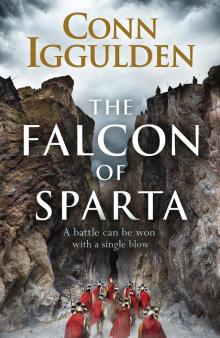 The Falcon of Sparta
The Falcon of Sparta Explosive Tales for Children
Explosive Tales for Children